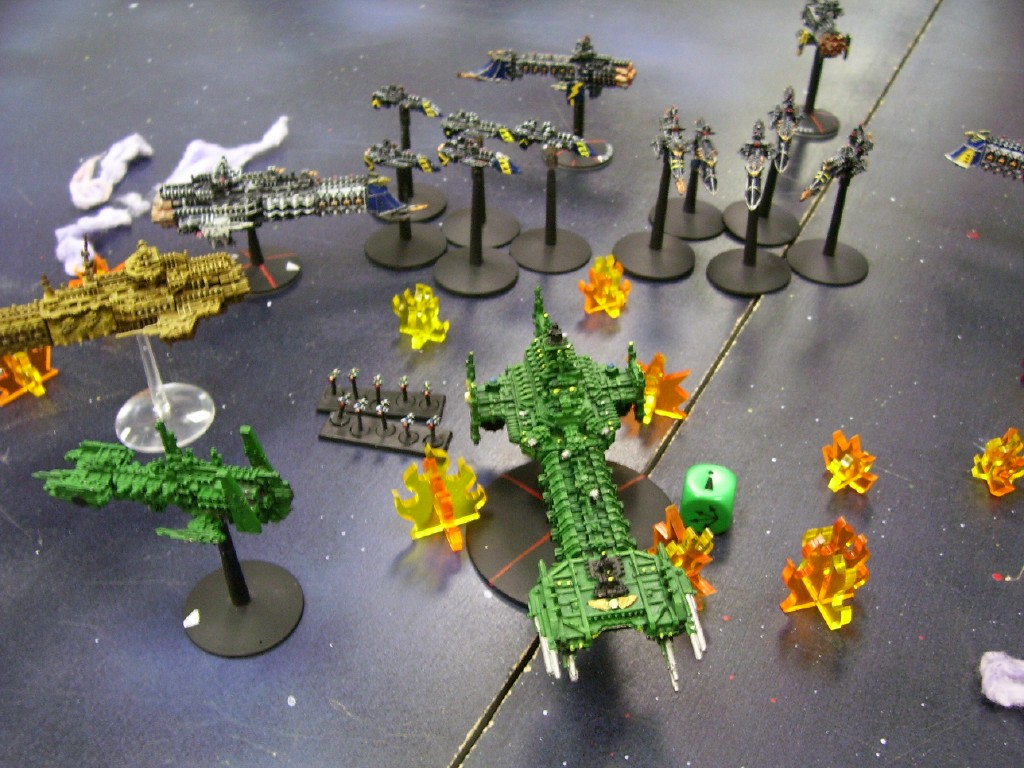Not long ago, I put up a post discussing the various aspects and different types of campaigns you might typically encounter. This time around, I want to focus a little more on one campaign system in particular, which is the one that was created for Games Workshop’s space naval combat game Battlefleet Gothic, commonly shortened to BFG. This game came with a great set of campaign rules that have always captured my imagination.
Now, before I get much further, I should mention that I’m not going to do a detailed, blow by blow description of this system. I’m endeavoring to write this so that intimate knowledge of its rules are not required, but if you find yourself confused you may want to have the PDF of the rulebook open and on hand for reference! So what makes the BFG campaign rules so special? Well, in all the campaign systems I have looked at over the years, this one remains one of the most interesting to me. One of the big reasons is that it is a “fully featured” campaign that covers all the aspects I discussed in my previous post. Specifically:
Experience/Leveling
At the top of the list is the fact that this system has very robust “leveling” mechanics that allow you to develop your fleet in three distinct ways. First of all, your fleet commander, which for all intents and purposes is your “avatar” during the campaign, will become steadily more powerful as the campaign progresses. Second, the crews of your ships can gradually improve, represented by the “Leadership” system BFG employs for various checks and tests. Finally, your ships themselves are able to gain new abilities as you acquire more advanced technology.
Map Based
These rules employ a simplified map, essentially a series of systems connected by lines. Players can only attack systems connected to one they already own, and once they take the system it then can contribute to their economy. The economy is tied directly to how ship damage is tracked from game to game.
Damage and Repair
In a BFG campaign, ships are not automatically healed after a battle. Instead, they carry their scars forward and a player must expend resources to repair them, or withdraw them for a campaign turn to fix them. These repairs require the use of “Repair Points,” which, as I mentioned, are obtained from controlling a system.
So, that’s what I mean when I say that BFG “covers all the bases” when it comes to campaigns. However, there are some more layers here that are worth examining. For one, the campaign system skillfully incorporates nearly every aspect of the overall game system into it; the standard game rules include things like leadership, commander abilities, one-off scenarios, and the like. All of these are employed by the campaign’s progression system, which makes them feel very elegant and easy to understand once you have the main rules down. All of this is not to say that the BFG campaign is perfect or anything, but for me it has always stood out as a great system that is fairly easy to understand and yet compelling enough to offer an additional strategic layer to the game.
The Bottom Line
By now, you may be wondering where I’m going with this. Well, suffice it to say I am planning on using the BFG campaign rules as the basis for a Firestorm Armada campaign system. This project will be a bit of an undertaking, as there are enough differences between the two games that a direct “port” from one to the other will not really work. A number of things will need to be tweaked to make this work, but that is a topic for next time!


Pingback: Firestorm Armada Campaign System Part 1: Differences |